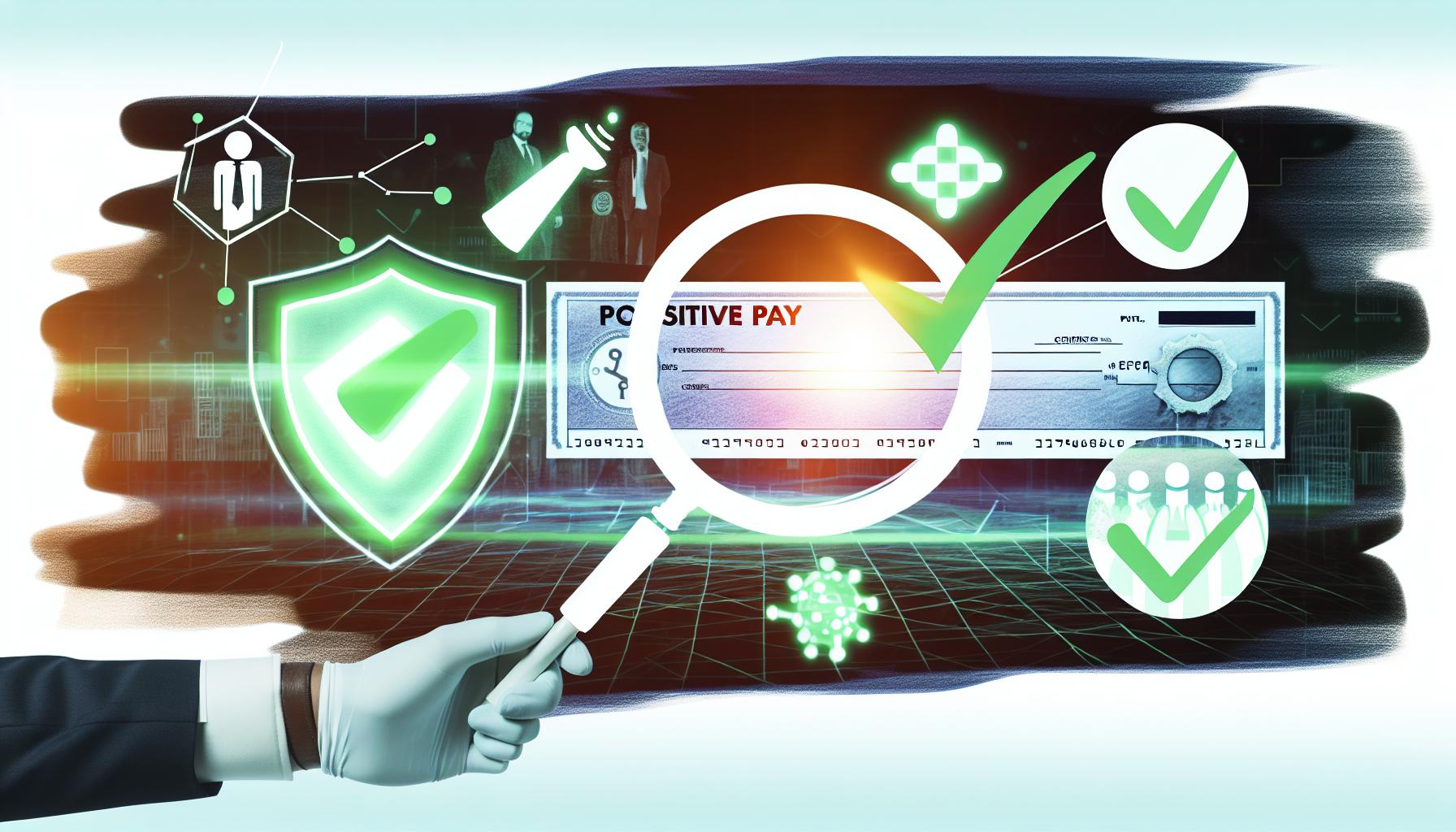
In today's fast-paced digital world, businesses conduct more financial transactions than ever. While this presents many growth opportunities, it also exposes businesses to the risk of fraudulent activity.
According to the 2022 AFP Payments Fraud and Control Report, nearly 30% of companies reported increases in payment fraud between 2020 and 2021. This highlights the importance of robust fraud prevention measures. One effective way to achieve this is using a banking service known as Positive Pay.
In this article, we'll look into what Positive Pay is, how it functions, and the many benefits it offers to businesses of all sizes.
What is Positive Pay?
Positive Pay is a sophisticated fraud detection and prevention service to help businesses detect and prevent fraudulent checks. It operates as a proactive defense mechanism against check fraud, one of the most prevalent forms of financial crime affecting businesses of all sizes.
How Positive Pay Works
.jpg?width=480&height=277&name=Positive%20Pay%20Image%20(1).jpg)
The mechanics of Positive Pay are relatively straightforward yet highly effective. When a business issues a check, it generates an electronic file containing detailed information about each check, such as the check number, payee name, and amount. This file is then securely transmitted to the business's bank.
Upon receiving a check for payment, the bank's system automatically cross-references the details of the presented check with the information provided in the electronic file submitted by the business. If all the details match, the check is cleared for payment without any issues.
However, if there's a discrepancy detected—such as a mismatch in the check number, payee name, or amount—the bank flags the check as potentially fraudulent. In such cases, the bank notifies the business promptly, allowing them to review the flagged check and decide whether to approve or reject the payment.
5 Benefits of Positive Pay for Businesses
1. Enhanced Fraud Prevention
By implementing Positive Pay, businesses can significantly reduce the risk of falling victim to check and Automated Clearing House (ACH) fraud. The system's real-time monitoring and validation capabilities ensure that only authorized checks are processed for payment, effectively thwarting fraudulent attempts to alter or forge checks.
2. Financial Loss Mitigation
Check fraud can cause substantial financial losses for businesses, ranging from unauthorized withdrawals to counterfeit check schemes. Positive Pay helps mitigate these risks by detecting and intercepting fraudulent checks before they are cashed, protecting the company's financial resources and preserving its bottom line.
3. Operational Efficiency
Positive Pay streamlines the check verification process, letting businesses manage their finances more efficiently. By automating the verification and reconciliation of checks, Positive Pay reduces the administrative burden on businesses, allowing them to focus on their core operations and strategic initiatives.
4. Enhanced Compliance
Positive Pay helps businesses comply with regulatory requirements and compliance standards by implementing strong fraud detection measures. By proactively identifying and addressing potential fraud risks, businesses can demonstrate their commitment to financial integrity and regulatory compliance.
5. Peace of Mind
Perhaps most importantly, Positive Pay provides business owners peace of mind, knowing that their financial transactions are monitored and protected against fraudulent activity. This heightened sense of security builds trust and confidence among stakeholders, strengthening the overall financial resilience of the business.
What is Reverse Positive Pay?
Reverse Positive Pay is a method where businesses monitor their checks. Each day, the bank informs the business about any checks presented for payment, and the business cross-checks them against their records. If the bank doesn't receive a response from the business within a set timeframe, it usually proceeds to cash the checks.
Reverse Positive Pay vs Positive Pay
Reverse Positive Pay means businesses are responsible for verifying incoming checks, while Positive Pay shifts that responsibility to banks. Reverse Positive Pay may not be as reliable as traditional Positive Pay, however some companies choose it because it can be the cheaper option.
Reverse Positive Pay:
- The bank reviews incoming checks
- The bank cashes all checks unless instructed otherwise by the business
Positive Pay:
- The bank reviews incoming checks
- The bank cashes all checks unless instructed otherwise by the business
What is ACH Positive Pay?
ACH Positive Pay is designed to prevent fraudulent ACH transactions. It allows only ACH transactions meeting specific criteria to process automatically while flagging suspicious transactions for further review.
ACH Positive Pay operates by employing a set of filters instead of a predefined list to catch potentially fraudulent payments. Businesses establish customized filters that permit specific ACH transactions, such as those from trusted vendors, to proceed automatically. They are authorized to approve or reject any blocked ACH transactions based on their discretion.
ACH Positive Pay vs. Positive Pay
Positive Pay identifies fraudulent checks, while ACH Positive Pay focuses on spotting fraudulent ACH transactions.
-
ACH Positive Pay detects fraudulent ACH transactions and uses custom filters set by the business to allow certain transactions.
-
Positive Pay identifies fraudulent checks by comparing incoming checks against a list of issued checks from the business.
Positive Pay is a valuable tool for businesses that want to enhance their financial security and protect themselves against fraud. By using advanced fraud detection capabilities of Positive Pay, businesses can safeguard their assets, and minimize financial risks. Most importantly, Positive Pay offers peace of mind and confidence to businesses, allowing them to focus on driving growth and success in their businesses.

